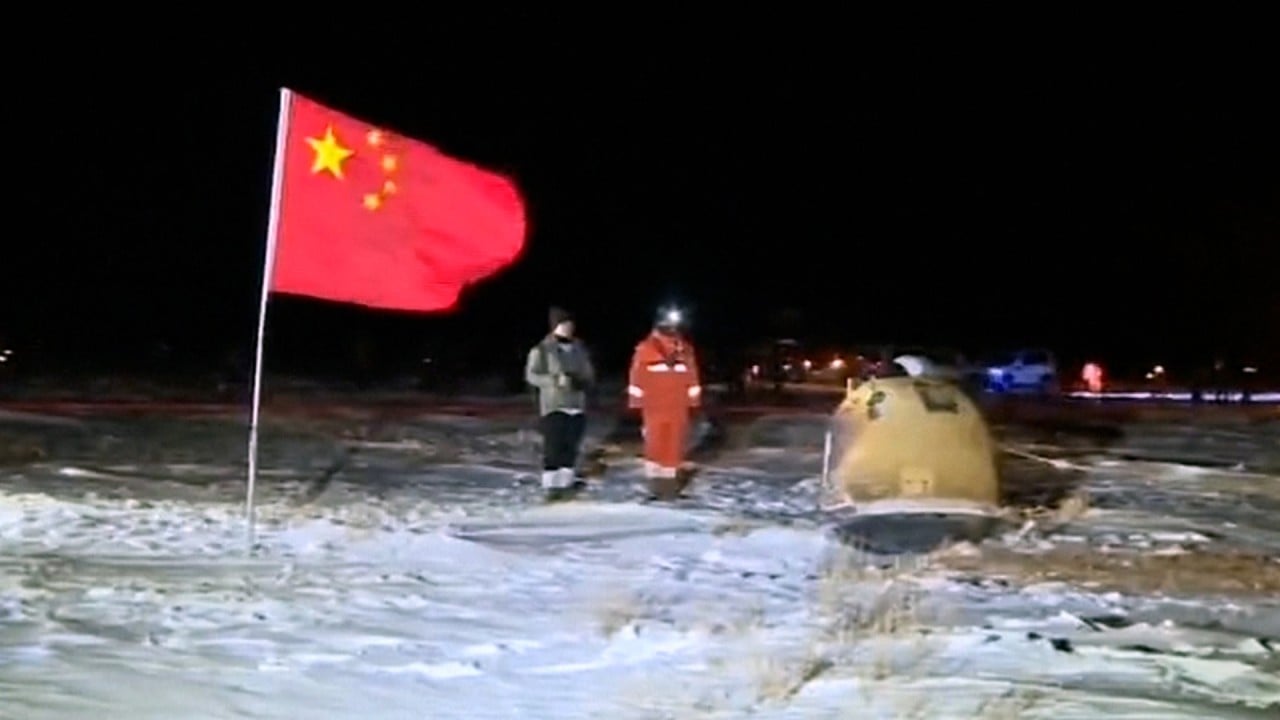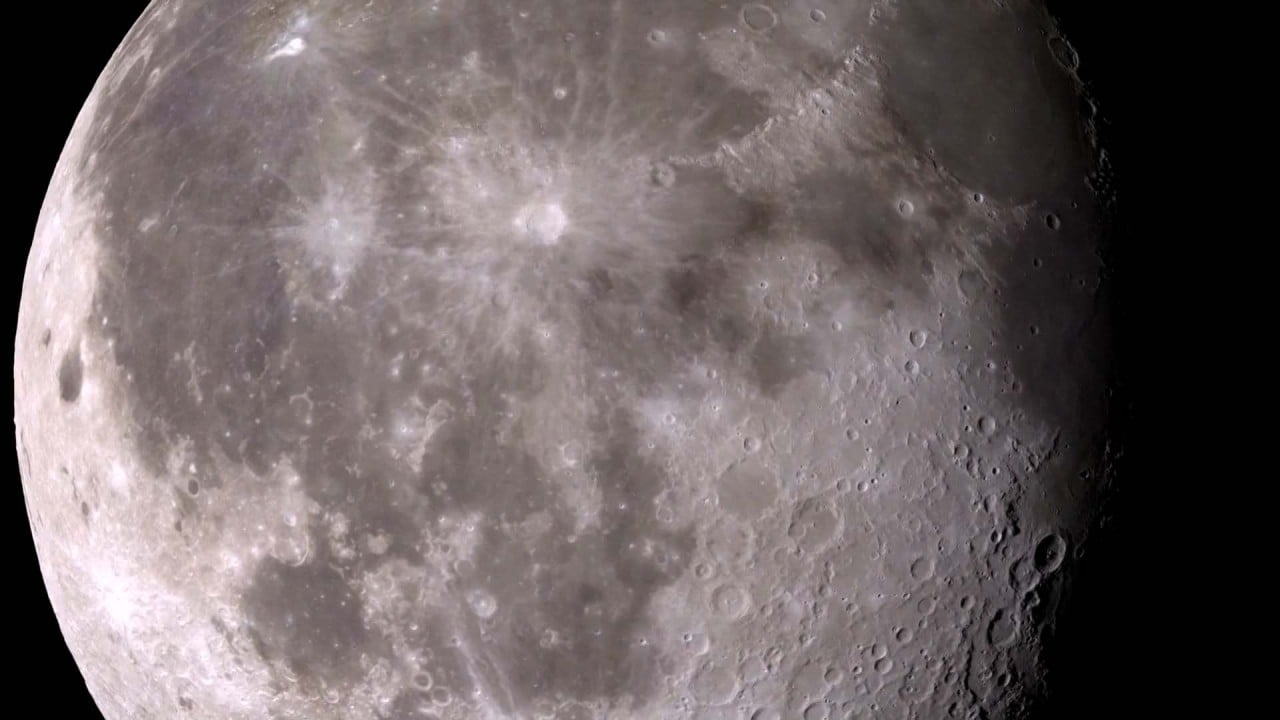
Chinese scientists declare discovery of new moon mineral from lunar rock samples brought back in 2020
- Phosphate mineral Changesite-(Y) was isolated using a series of processes, including X-ray diffraction, according to China National Nuclear Corporation
- CNNC party official says team measured concentration of Helium-3, a future fusion energy source, in lunar sample for future assessment and exploration
Chinese scientists have discovered a new mineral on the moon, making China the third nation after the United States and Russia to have discovered a lunar mineral, officials reported on Friday.
A research team from the Beijing Research Institute of Uranium Geology, a subsidiary of the China National Nuclear Corporation (CNNC), isolated a single crystalline particle of the material from more than 140,000 lunar particles using hi-tech processes, including X-ray diffraction, according to Wang Xuejun, a party official with the CNNC.
The particle was about 10 microns in diameter, or about one-tenth of a human hair, Wang told a press conference on Friday.
Changesite-(Y) is a phosphate mineral found in lunar basalts and the Commission on New Minerals, Nomenclature and Classification of the International Mineralogical Association has confirmed it as a new mineral, according to information presented at the conference.
It is the sixth new mineral discovered on the moon by humans.
“[The discovery] provides more basic scientific data for the evaluation and development of lunar resources and has deepened mankind’s knowledge of the moon and the solar system,” Dong Baotong, vice-chairman of the China Atomic Energy Authority, told the conference.
“China has also become the third country to retrieve lunar samples and discover new lunar minerals after the US and Russia,” he said.
The CNNC’s Wang said the discovery of Changesite-(Y) was a breakthrough in mineralogy research and it provided important new support for the history and evolution of the moon and for deep space exploration.
“It provides fundamental scientific data for future assessment of helium-3 in lunar samples and their exploration,” Wang said.
Like China’s moon missions, the new mineral is named after the Chinese moon goddess Chang’e.
Liu Jizhong, director of China National Space Administration’s Lunar Exploration and Space Programme Centre, told the conference the CNSA had distributed four batches of 152 lunar samples totalling over 53 grams (1.86oz) to 98 applicants from 33 research organisations.
Ye Peijian, a senior Chinese lunar programme designer and engineer, told state broadcaster CCTV last year China could land its astronauts on the moon by 2030.
“I personally think that as long as the technological research for manned moon landing continues, and as long as the country is determined, a Chinese crewed moon landing is entirely possible by 2030,” Ye was quoted as saying.



